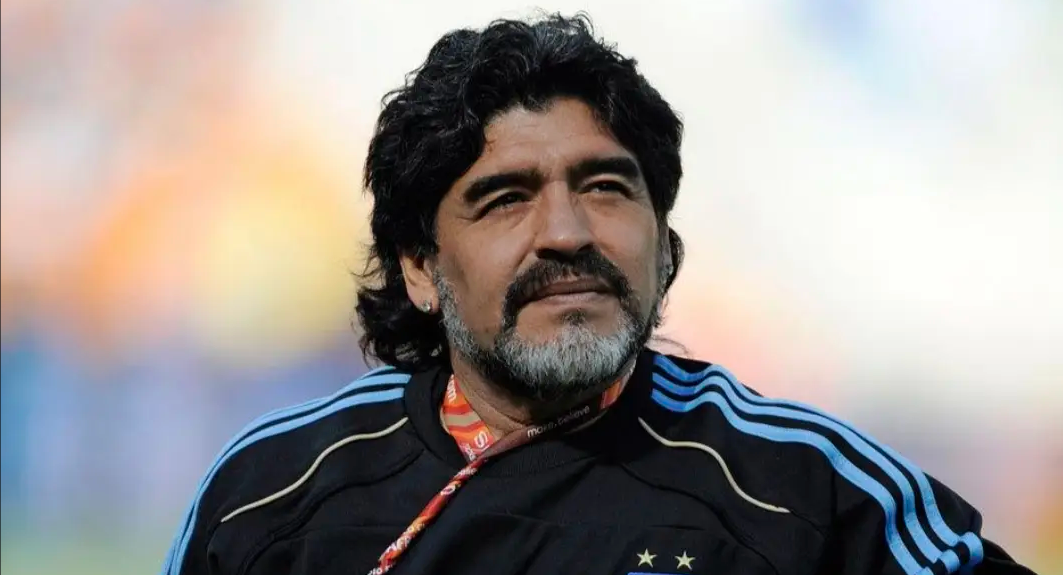
1. 2010: Diego Maradona's Coaching Tenure Ends
The Rise and Fall of a Football Icon
Diego Maradona's tenure as Argentina's head coach (2008–2010) was a rollercoaster of passion, controversy, and ultimately, failure. Appointed after the team's dismal 2006 World Cup campaign, Maradona—a national hero for his 1986 World Cup exploits—was seen as a messianic figure who could unite the fractured squad. His appointment was met with unprecedented fanfare, with crowds chanting "¡Qué se sienta el Diego!" ("Let Diego sit [on the throne]!") . However, his lack of formal coaching credentials and unorthodox methods soon became liabilities.
Tactical Chaos and Contradictions
Maradona's approach prioritized individual brilliance over structured tactics. He famously told Lionel Messi, "Play like you do for Barcelona, but with the national team jersey" , eschewing positional discipline. While this freed Messi to create magic (he recorded five assists in the 2010 World Cup), it left the team vulnerable defensively. Maradona’s insistence on fielding a 4-4-2 formation with four forwards—including Carlos Tevez and Gonzalo Higuaín—exposed gaps in midfield, where Javier Mascherano was left isolated .
The 2010 World Cup quarter-final against Germany was a microcosm of his flaws. Argentina’s 0-4 collapse revealed systemic issues: a disorganized defense, poor marking, and a lack of a Plan B. Germany exploited Argentina’s high line with clinical counterattacks, scoring three goals within 20 minutes . Maradona’s post-match admission—"This was like a punch from Muhammad Ali"—underscored his emotional vulnerability.
Feuds and Fallout
Behind the scenes, Maradona clashed with the Argentine Football Association (AFA) over control. The AFA demanded he replace his crony-laden coaching staff, including childhood friend Hugo Tocalli, but Maradona refused, declaring, "My team stays" . This stubbornness alienated key figures like AFA president Julio Grondona, who later called Maradona’s tenure "a circus" .
The fallout extended to player selection. Maradona’s exclusion of veterans Javier Zanetti and Esteban Cambiasso—both key figures in Inter Milan’s 2010 treble—sparked outrage. Zanetti, a fixture in Argentina’s defense for over a decade, was omitted without explanation, leaving right-back as a revolving door of failed experiments .
Legacy and Protests
Despite his shortcomings, Maradona’s departure on July 28, 2010, triggered protests across Argentina. Fans waved banners reading "¡Gracias, Diego!" and clashed with police in Buenos Aires . His legacy remains polarizing: while he inspired loyalty through his charisma, his managerial record—21 wins in 32 matches (65.6% win rate) but no major trophies—pales beside his playing career .
The AFA replaced him with Sergio Batista, whose conservative tactics failed to revive Argentina’s fortunes, leading to yet another World Cup quarter-final exit in 2014 . Maradona’s reign highlighted a harsh truth: iconic players do not always make iconic coaches. As journalist Guillem Balagué noted, "He was a prisoner of his own legend" .
2. Michael Carrick: The Quiet Architect of Manchester United’s Dominance
From Humble Beginnings to Red Devil Royalty
Born on July 28, 1981, in Wallsend, England, Michael Carrick emerged as one of the most underrated midfielders of his generation. His career trajectory—from West Ham’s youth academy to Manchester United’s trophy-laden midfield—was defined by intelligence, composure, and an uncanny ability to control tempo.
The Making of a Midfield Maestro
Carrick’s breakthrough came at Tottenham Hotspur (2004–2006), where his range of passing and positional sense earned him the nickname "The Professor" . His £18.6 million move to Manchester United in 2006 raised eyebrows—"Why spend so much on a slow player?" critics asked—but Sir Alex Ferguson recognized his value. Partnered with Paul Scholes, Carrick formed a midfield axis that dominated the Premier League for half a decade.
Tactical Prowess and Silverware
Carrick’s role as a deep-lying playmaker was pivotal to United’s success. He averaged 68 passes per game during their 2007–08 Champions League-winning campaign, often initiating attacks with raking diagonals to wingers like Cristiano Ronaldo . His defensive contributions were equally vital: in the 2008 Champions League final, his interception of Frank Lampard’s pass set up United’s winning penalty .
Over 12 seasons at Old Trafford, Carrick won 5 Premier League titles, 1 Champions League, 3 League Cups, and 2 FA Cups. His 2012–13 season was particularly notable: at 32, he orchestrated United’s 20th league title, earning the club’s Player of the Year award .
International Frustrations
Carrick’s England career was less glittering. Despite earning 34 caps, he was often sidelined by Fabio Capello’s preference for Steven Gerrard and Frank Lampard. His exclusion from the 2012 European Championship squad—"We need more energy," Capello claimed—drew criticism from fans who viewed him as a stabilizing force .
Post-Retirement: The Transition to Coaching
After retiring in 2018, Carrick joined United’s coaching staff under Ole Gunnar Solskjær. His tactical acumen shone during his brief spell as interim manager in 2021, where he oversaw wins against Arsenal and Chelsea . In 2022, he took charge of Middlesbrough, transforming the Championship side into promotion contenders. His possession-based style—"Play through the lines, not over them"—led to a 14-game unbeaten run in 2023, earning him Championship Manager of the Month .




